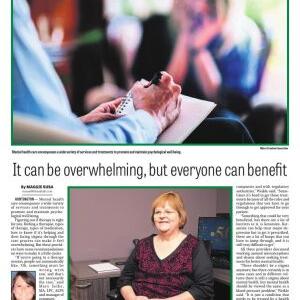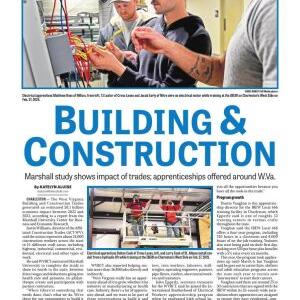The West Virginia Legislature approved the state budget for Fiscal Year 2026 on Friday, this one representing a ����ֱ���compromise����ֱ��� between the state Senate����ֱ���s version ����ֱ��� which largely reflected ����ֱ��� and a very different one by the House.
The new state budget totals about $5.317 billion in base revenue spending, a $5 million decrease from the budget proposed by Morrisey at the beginning of the session. The House����ֱ���s passage of was accepted by the Senate, and it is now completed.
On Thursday, with four members absent and not voting, the House , with 10 Republicans joining eight of the chamber����ֱ���s nine Democrats in voting against it. Delegate John Williams, D-Monongalia, was the only Democrat to vote in support of the budget. On Friday, the Senate accepted the changes, 32-0, with two members absent.
The budget includes about $210 million in supplemental funding, which will be appropriated to listed line items if this fiscal year ends with enough revenue to spend. Those line items, in order of priority, include: $125 million to the Division of Highways, $75 million to the Economic Development Project Fund, $10 million to the Water Development Authority and $250,000 to the Cabell County Commission for Lily����ֱ���s Place, a nonprofit focused on supporting babies born with neonatal abstinence syndrome.
The budget also transfers about $33.6 million from general revenue to the state Personal Income Tax Reserve Fund. That money, said House Finance Chair Vernon Criss, R-Wood, can be allocated by the Legislature at any time.
����ֱ���We have total access to those dollars at any time as a reserve fund,����ֱ��� Criss said. ����ֱ���We����ֱ���re just parking that money there so that at some time [in the future, when] we����ֱ���ll have to start doing supplemental [appropriations] to keep the government going, that����ֱ���s one of the places we can draw money down.����ֱ���
The Personal Income Tax Reserve Fund currently has about $460 million. Of that, only $60 million is statutorily required to stay in the fund.
Delegate Kayla Young, D-Kanawha, expressed frustration at transferring money to the Personal Income Tax Reserve Fund given its current funding levels in the face of other programming needs.
In the budget, child care is only receiving about $8 million ����ֱ��� which Criss said reflected Morrisey����ֱ���s proposed funding level. Years ago, Young said, that line item was funded at $17 million and the need has not decreased.
����ֱ���We����ֱ���re adding ... $33 million to a fund that has $460 million in it already, and we can����ֱ���t fund child care at the same amount that we did 10 years ago?����ֱ��� Young said. ����ֱ���I don����ֱ���t get it.����ֱ���
The budget also includes returning $15 million in funding to West Virginia University that the House previously cut. It also reflects fewer cuts to state agencies with consistent job vacancies. Initially, the House proposed a 2% cut to vacant positions that was expected to yield about $8 million in savings. But Criss said those cuts were difficult because of how some positions were categorized in the state budget. This budget includes a roughly 1% cut in force ����ֱ��� only to already vacant positions ����ֱ��� totaling about $6 million in savings.
The FY 2026 budget compared to funding levels from 2025 include an increase to the employer-paid share of the Public Employee Insurance Agency, a $100 million increase to foster care and adoption line items, a funding increase for the state Division of Corrections and a cut to Jobs & Hope.
Jobs & Hope is a program started by former Gov. Jim Justice to help train and support people in recovery who are transitioning into the workforce. Criss said the cuts to the program reflected a proposal from Morrisey����ֱ���s initial budget, which had the specific line item for the program collapsed into a larger line item.
����ֱ���When the governor presented his budget, he collapsed a lot of those lines, and then he had to open up those line items again because he wanted the ability to move money around, and it����ֱ���s not his job to do that,����ֱ��� Criss said. ����ֱ���It is our job to determine how those line items are spent.����ֱ���
Last year, Criss said, the Jobs & Hope program ����ֱ��� originally dubbed ����ֱ���Jim����ֱ���s Dream����ֱ��� by Justice ����ֱ��� was funded at $6.2 million. Now, it����ֱ���s down to about $3.5 million.
����ֱ���So we believe that����ֱ���s where he made his cuts, and we took the Senate����ֱ���s position [in the compromise],����ֱ��� Criss said.
Delegate Mike Pushkin, D-Kanawha, said it was disappointing to see a lack of funding for what he believes is a successful program for people in recovery, no matter his dislike for both the current and former governors.
����ֱ���A good idea is a good idea. This is something that worked and I hate to see it cut in half like this,����ֱ��� Pushkin said. ����ֱ���It����ֱ���s not a whole lot of money in regards to the entire budget. I hate to see it go away like this because of an administration change and it was somebody else����ֱ���s idea ����ֱ��� when something works, you should keep doing it no matter who����ֱ���s dream it was.����ֱ���
Other legislation is still being debated, and the regular legislative session ends at midnight Saturday.













